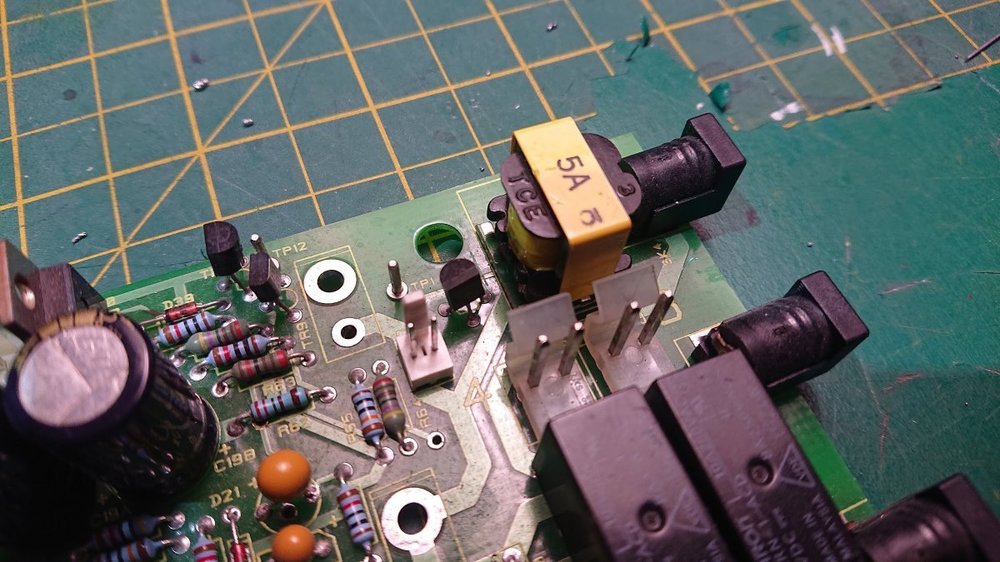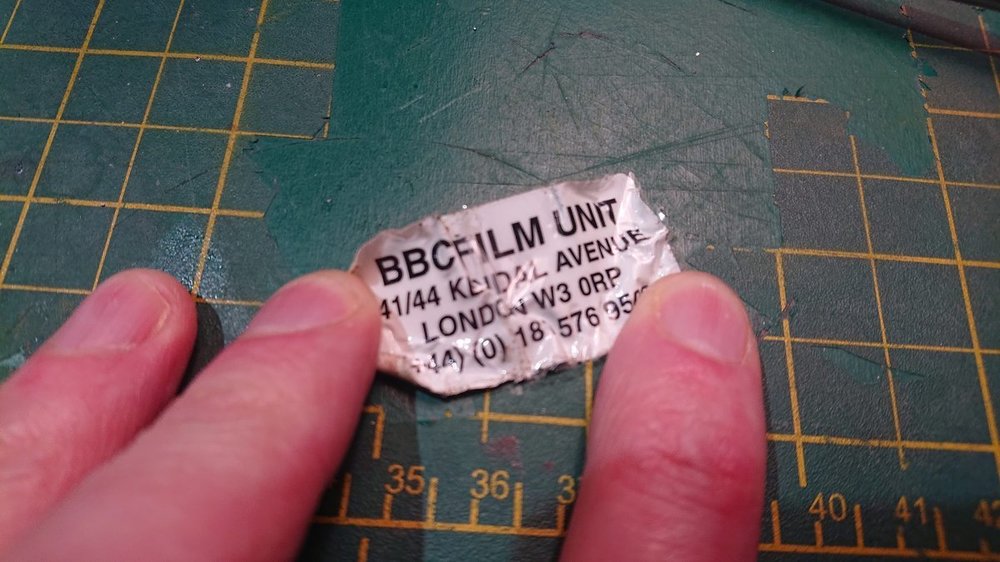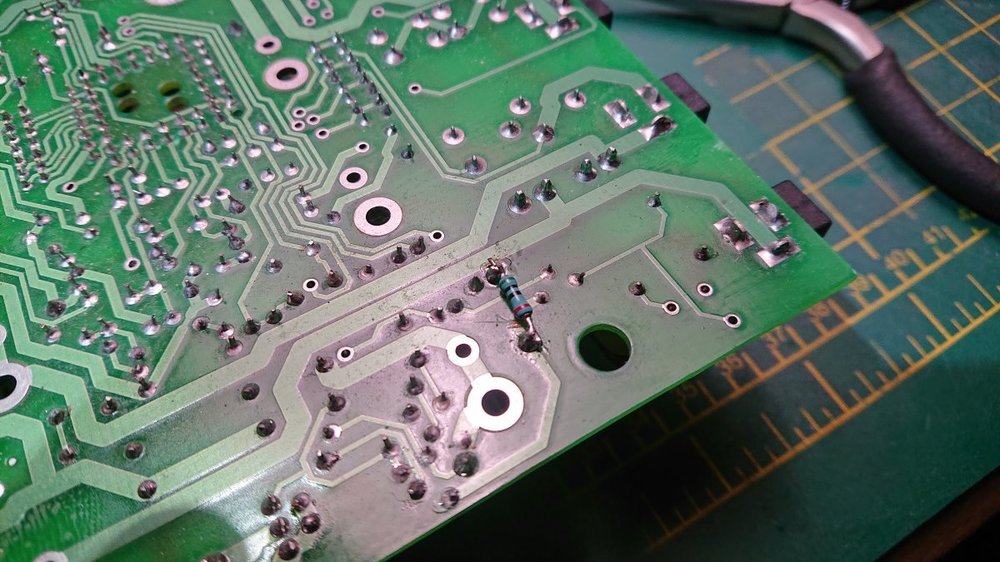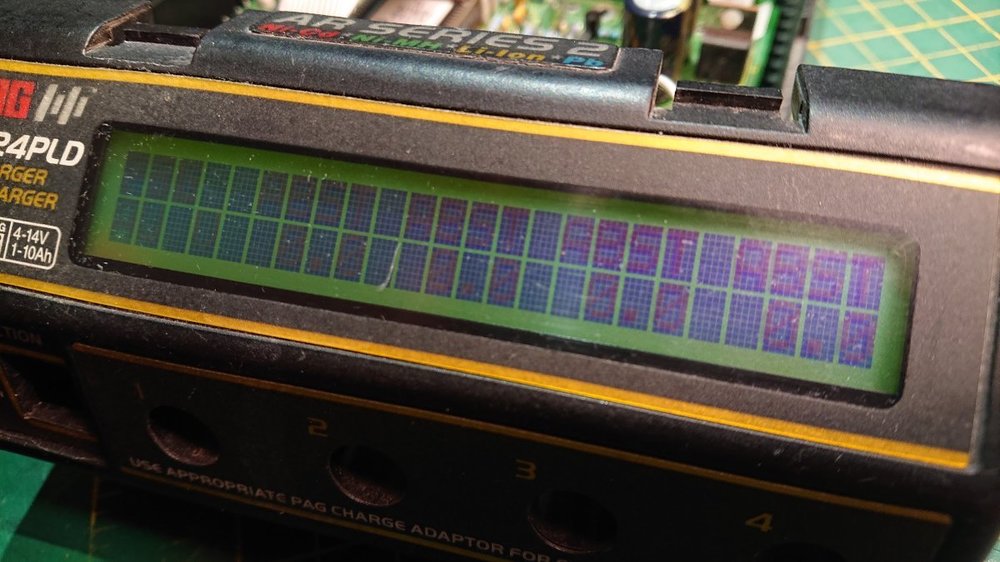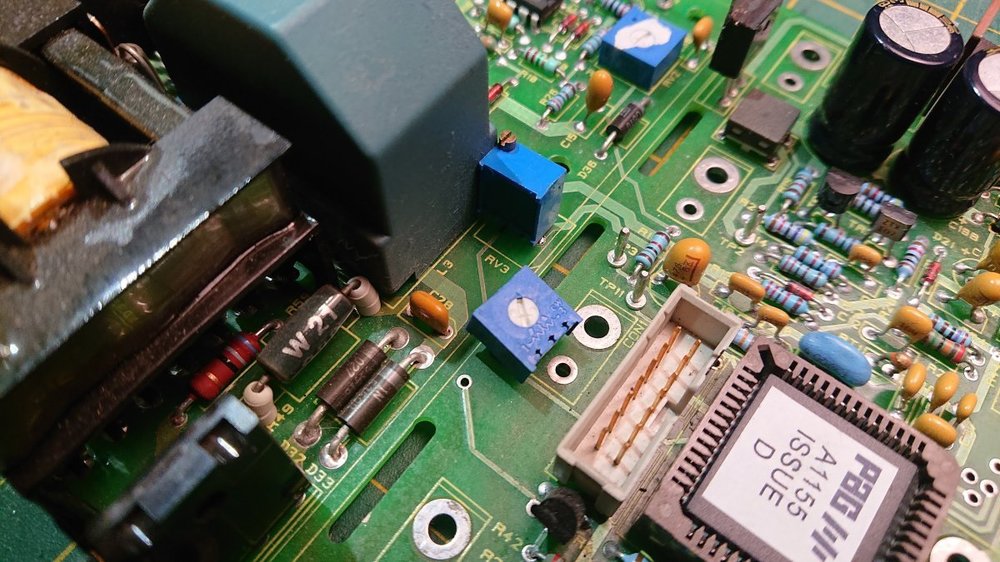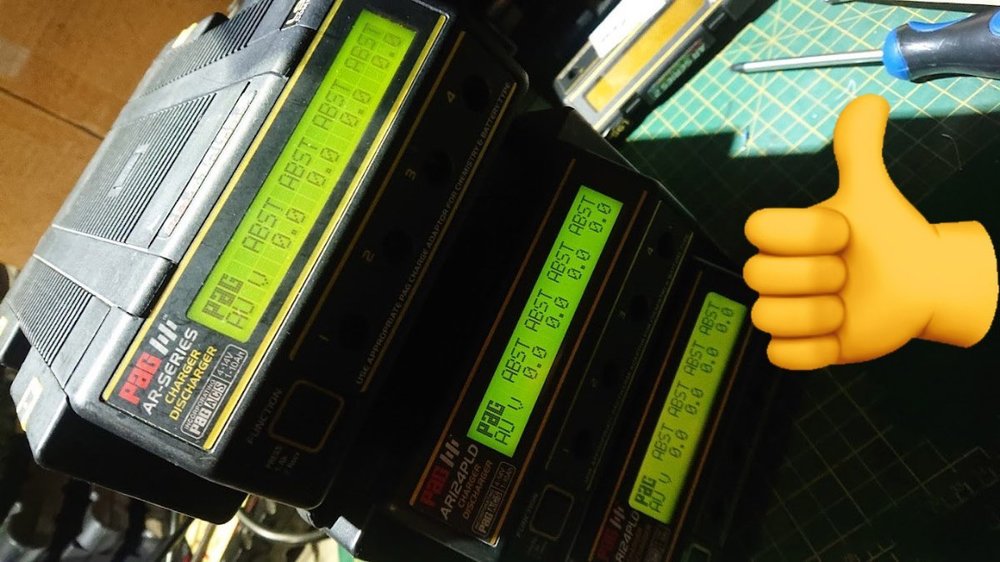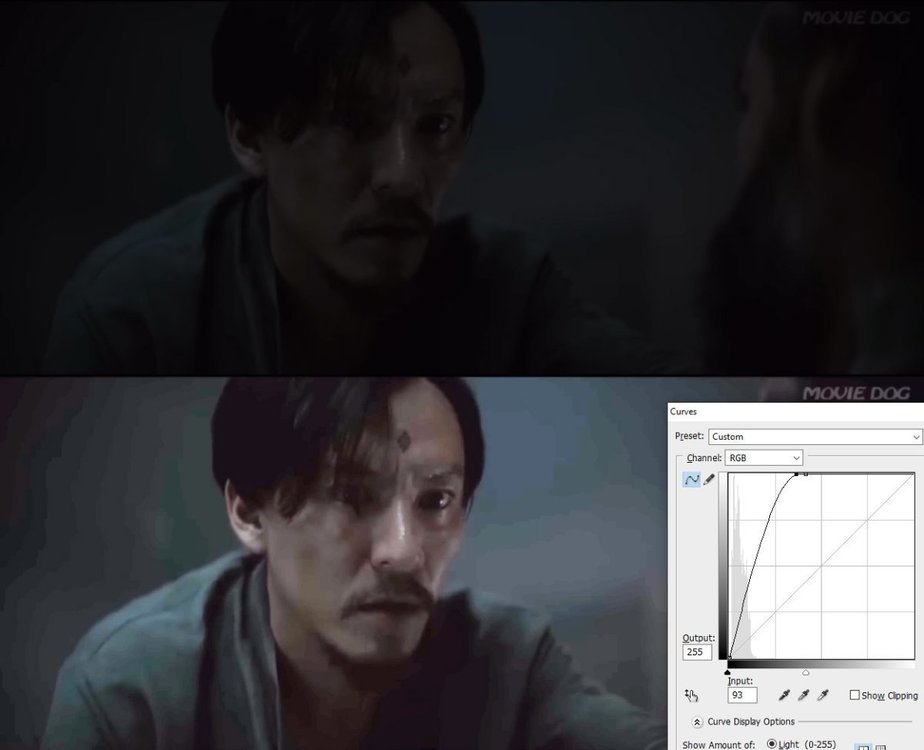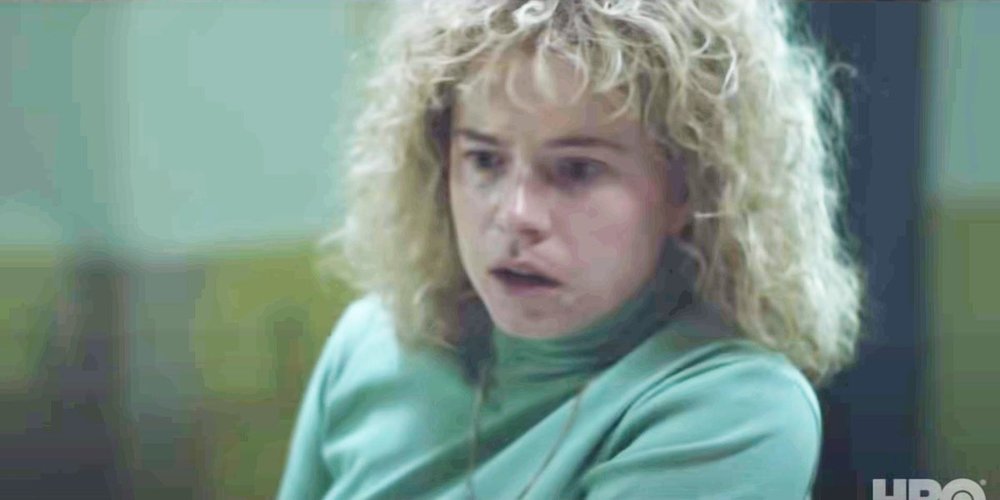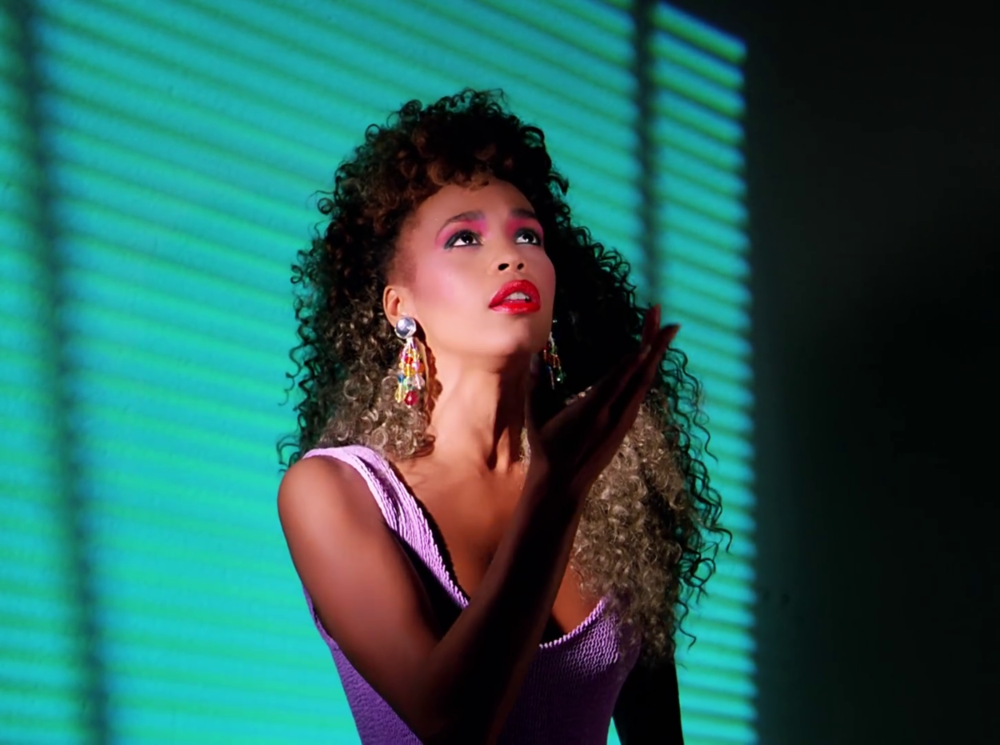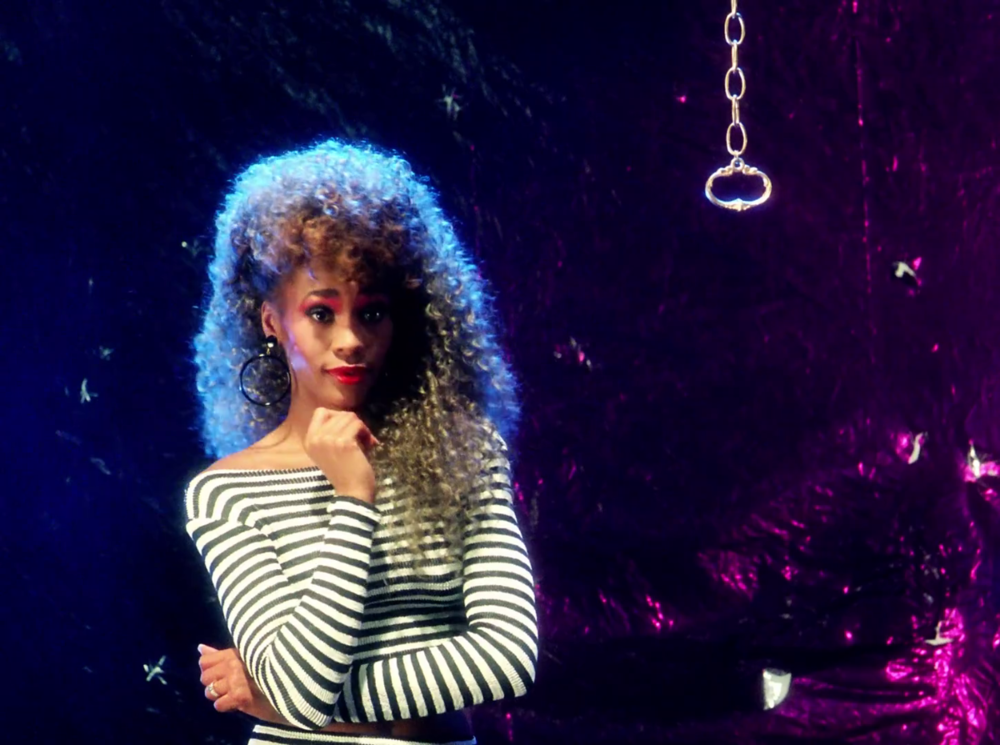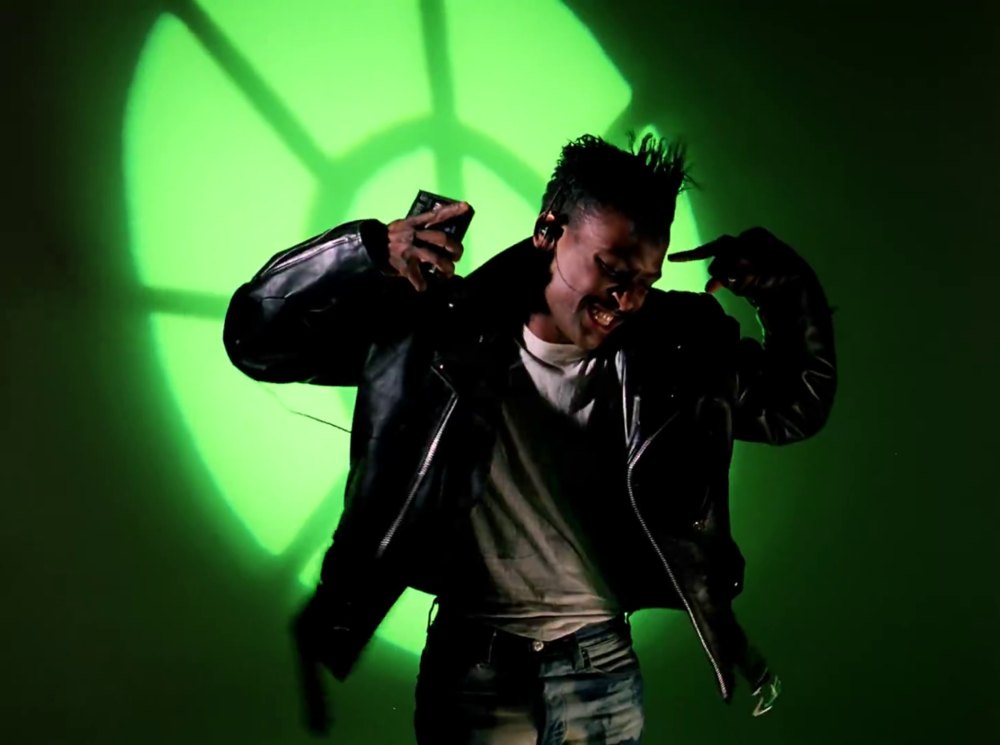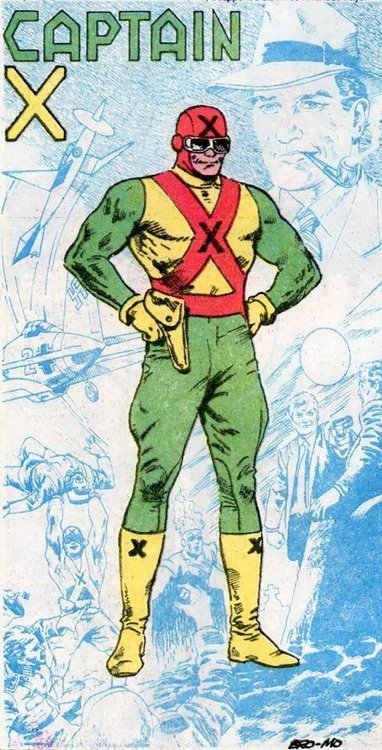-
Posts
13,748 -
Joined
-
Last visited
Everything posted by Phil Rhodes
-

Postproduction guidance - beginner
Phil Rhodes replied to Patricia Dauder's topic in Post Production
Not necessarily. I put Resolve on a 7-year-old Windows PC recently and it's fine. It'll even just about cut 4K, although it's probably a better idea to use the built-in proxy stuff at that point. We are beyond the point where basic post needs huge hardware. -
People seem to make a living on YouTube with this sort of stuff, so let's document a process. I have a soft spot for old PAG battery gear. I should be clear that the company now makes far better stuff than this - it's all at least ten to fifteen years old, it's just that some of the old packs were really easy to recell. Creating a battery system with enough capacity to create a 48V bus for big LED lights would be several times more expensive any other way. So, today we're revisiting a truism about buying quality vintage gear, which generally keeps being useful for a lot longer than brand X. The problem is that one of my AR124 chargers came with a broken display. It's old enough to have some history. The upside is that the LCD character displays are very much an inexpensive commodity item, and I purchased a replacement for £6.50 on eBay. If anyone can see the immediate problem here, it's that the old display (bottom) has an electroluminescent backlight panel, like an Indiglo watch, while the modern one, at the top, uses LEDs. This means this was probably one of the original, oldest AR124 chargers, since more recent ones have LED-backlit displays from the factory. So, I modified the charger to properly drive the LED backlight. The relevant area of the PCB involves the transformer marked 5A and the black plastic TO92-cased transistor to its left, which together form a high-voltage inverter. The backlight connects to the smaller white two-pin connector. The relevant changes included cutting a couple of PCB traces to isolate the inverter circuit, and connecting pin 2 of the connector to the charger's +5V logic supply via a resistor to limit the backlight current to about 25mA. This matches the brightness of other AR124 chargers, and minimises the extra load on the charger's logic supply. Job done! All that remains is to reassemble the whole thing, and... oh, bollocks. The problem is that the variable resistor used to set the LCD's contrast bias doesn't have enough range of adjustment. It was fine for the old one, but this display needs a setting we can't achieve with PAG's original design. We might be seeing the fact that modern LCDs of this type are designed to be less temperature sensitive than old ones, which is fine, but it changed the bias behaviour. The resistor in question is marked 202, which means 20 followed by two zeroes, or 2000 ohms. That instinctively feels low. Usually we use 10K potentiometers for that. Checking the datasheet for the specific display I'm using, sure enough, it recommends 10K. So, I replace the 2K RV3 with a 10K pot, which I have to bodge in a little as I don't have one of the same physical layout. The new one is just above where it says RV3, the old one is below it. Splendid! First person to identify the modified unit wins a cookie.
-
That's a sort of reverse coincidence; inasmuch as I've done either of those, I've sort of gone the opposite direction. If it helps, I spent much of this evening discussing the paucity of recent cinema releases. I'm not really particularly inspired by the writing in most films. I haven't seen a film that really got to me for years, which creates a sort of circular problem: they're mediocre, so I don't bother seeing them, so I probably miss good stuff, which is further discouraging. When was the last decent sci-fi, anyway? Is Dune as good as it gets, these days?
-

Should I buy a new Arri Alexa 35 or a used mini LF?
Phil Rhodes replied to Edith blazek's topic in ARRI
Really it comes down to what you're interested in doing with it. What sort of clients do you see renting it and what do they want? From a purely theoretical point of view there are ways in which bigger sensors can become something of a zero sum game (I'll pontificate about that if you like, but you'll end up calling me a nerd). All else equal I'd get the Alexa 35. But all things are very rarely equal and it is very rarely a choice that simple.- 4 replies
-
- arri
- alexa mini lf
-
(and 1 more)
Tagged with:
-
For that you want pneumatic wheels, and be careful about the cheap ones described as "pneumatic" which emphatically aren't. I find a YouTube search for "pneumatic wheel 150mm" turns up the sort of wheels used on scooters. Another option is the front wheels for wheelchairs, since the grey tyres are intended to avoid marking polished floors. They're available as spart parts. Often they have central bearings designed to accomodate 8mm shafts so it's easy enough to try different things. Various clamps and brackets are available for various types of tube. The commonest is around 50mm (two inch, give or take), which is more or less scaffolding tube, which is very common worldwide. Huge amounts of accessories are available. It might be a bit big and heavy, though. Aluminium is more expensive (though not ruinously if you just need a short length). You can also get a fair number of accessories for 32mm (inch and a quarter) or 38mm (inch and a half) tube. The way to do this is figure out what brackets you need, and buy tube to suit. If you're going to ride this thing holding a gimbal, great. If you actually want to mount a camera directly to it, be prepared for a lot of vibration with the sort of system you've outlined on most surfaces. If you want something you can drive along and get decent results, look at something like Motion Impossible's Agito, which has more in common with a very large, beefed-up RC car than a scooter. I haven't looked at it in detail, but similar things are discussed here.
-
Not to hijack the thread, but I see a lot of talk about homebrew scanners these days. Much of it is people cooking something up to get at old super-8 material that doesn't have much value, but I've heard about cintel 3s being refitted with HD cameras, as well as ground up designs. It's something I'd pondered writing about. Is there anyone in particular who's good to talk to about that sort of thing?
-
Is it me, or is it not so much about the change in lighting anyone wants between a wide and a closeup, it's more about the fact that you can't create the lighting in the wide that you'd want for the closeup? You can't have enormous diffusion six inches from someone's earhole then shoot them full length, but if it were possible to create that closeup lighting for the wide, anyone would just do that and get everything they needed.
-

Point To Advanced Education When It's All Networking?
Phil Rhodes replied to Max Field's topic in General Discussion
Max, the fact that a lot of the people who're working on the good stuff are not actually all that amazing is one of those things that I think most of us realise after a few years. At the high end of almost anything, there's very often a lot of specialisation, and people working in professional silos. Often they're reasonably competent at exactly one thing and really quite laughably inept at anything else, and yes, sometimes that does actually cause real-world problems when something slightly unusual comes up and people are required to cooperate interdepartmentally. On big sets - when I've seen them - it's hard not to laugh at all the desperate stumbling around that happens if anything vaguely out of the ordinary should occur. People who work on small stuff often have much broader, if shallower, knowledge, and that can lead to people devising smart solutions to things which the high end would do a much harder way. Something which exacerbates this is that on bigger productions, it's seen as highly inappropriate to involve oneself in, make any comment on, or in any sense interact with the work of other departments, which can literally mean people sitting around watching things go wrong, aware of a straightforward solution, but unwilling to air it. And that's even without considering the involvement of unions, many of which actively seek to encourage and enforce that sort of separation, because, after all, it creates work for people. If this is leading you to the conclusion that working on short films is a lot more entertaining for you as an individual than working on huge shows, well, you've probably got a point. The only way anyone can ever get any sort of meaningful creative control over a huge international blockbuster is to be one of a group of people we know by a single name and can probably count on the fingers of one hand - Nolan, Cameron, Spielberg, etc., and finding oneself in that sort of position is dependent on many things, but inevitably involves a lot of luck. You can cite situations like Jurassic World, but the idea that people like Trevorrow have any sort of real creative authority on shows like that is mistaken. They're puppets on strings, dancing to the tune of executives in return for a big paycheck. With regard to Mark's comments on crewing, to some extent that can be laid at the door of a huge shortage of qualified people, and to some extent that is due to the likes of Netflix sucking up any even vaguely-qualified warm body. To another extent it's due to the recruitment process of the film industry, which can fairly be described as "brutally hostile." New entrants are faced with scowling, often openly-hostile incumbents who see newcomers as potential competition. Nobody is incentivised to train anyone and this has been the case for decades. For much of that time, the demand for crew in the UK was so vanishingly small that it barely mattered, but the problem is being thrown into sharp relief now the big streamers have turned up, post-pandemic, with a bulging folder of scripts to be produced. If this seems to paint a picture of an industry which isn't what most people think it is and which is rotten to its core by anyone's standards... well, yes. Welcome aboard, newbies! This is really about producers, but I think it says everything that needs to be said. -

Achieving a dark, moody scene: on set or in post?
Phil Rhodes replied to Joe Marler's topic in Lighting for Film & Video
Well yes, and that's where Adrian's comments apply, because both home and theatrical displays are can be inconsistent enough to spoil things. From memory, the appearance of the very dark frame from Dune looks, on my monitor, largely as it looked when projected, which is to say so dark it's genuinely hard to tell what's going on. I'd encourage anyone viewing it to click on the frames for a full-screen view so that they're not so small, and not so surrounded by the bright white of the forum background, but it's not great. -

Achieving a dark, moody scene: on set or in post?
Phil Rhodes replied to Joe Marler's topic in Lighting for Film & Video
I've posted a couple of times about the increasing tendency for things just to be dark, as opposed to contrasty. Below are a couple of comparisons from Dune and Chernobyl which seemed to rely on underexposure. Dune seemed generally well-lit, although Chernobyl looked scrappy, presumably deliberately so, though it's hard to tell the difference sometimes. I am not a big fan of this and I don't understand why people think it is an appropriate way to make things mysterious. It doesn't. it just makes things poorly-defined and hard to properly comprehend, to the point where we can't tell whether anything disturbing is happening or not, because we can't see the layout of the scene or anyone's expression. It's the visual equivalent of Tenet's terrible dialogue mix. -

Can we make it more 80s, please?
Phil Rhodes replied to Phil Rhodes's topic in On Screen / Reviews & Observations
-
I'm probably very late to realising this remaster happened, but one can hardly complain about the portraiture.
-

How 35mm reels were shipped to theaters
Phil Rhodes replied to Daniel D. Teoli Jr.'s topic in Off Topic
Of course that's only about an hour's worth, tops. When I was working as a projectionist in the late 90s and early 2000s, they came in slightly shiny, brightly coloured, possily nylon plastic cases with a hinged lid and divided slots inside for up to (as I recall) six reels, or perhaps it was five. The grim prospect of movies that needed more than one case was not popular.- 3 replies
-
- 35mm
- film shipping
-
(and 1 more)
Tagged with:
-

S16 pl to pl focal reducers, and can you shoot in normal 16mm on a 416?
Phil Rhodes replied to Edith blazek's topic in 16mm
Aha! Someone has actually done it! I had no idea that was even on the market. Do you happen to know when that became available? But yes, in general, I would like to see a shallower mount on the Ursa series. Whether that's some sort of bolt-on universal mount system, or just micro four-thirds, would be fine, although I think MFT is perhaps a little small and fragile. Maybe something larger would be better, although I would point out that JVC managed to fit a rotating filter wheel, IR filter and a super-35mm sensor behind MFT on the GY-LS300 camcorder, so it can be done. P- 7 replies
-
- super16
- 16mm camera
-
(and 2 more)
Tagged with:
-

S16 pl to pl focal reducers, and can you shoot in normal 16mm on a 416?
Phil Rhodes replied to Edith blazek's topic in 16mm
What I'd really like to see is for Blackmagic to move the sensor on the Ursa Mini a lot, lot closer to the mount, so we could all have speed boosters on their cameras.- 7 replies
-
- super16
- 16mm camera
-
(and 2 more)
Tagged with:
-
Sounds to me like it's a bit of standard early-to-mid twentieth century advertising-speak, from a time where X worked as a generic claim to greatness and uniqueness without making any claim specific enough to fall to truth-in-advertising rules. After all, The X-Men first published in 1963, and I'm not sure that really meant much beyond being backronymed into the name of a lead character. The book (then film) The Strange World of Planet X would be another great example, from 1958, but it was sold as Cosmic Monsters in the USA, so only partial credit. There are probably other examples of X in this sort of context from around that time. Even DC was in on it.
-
Well, there have been experiments around figuring out a way of doing the Kodachrome process in the modern age. In the end, it's just chemicals. (It's a shockingly complicated and intricate series of chemicals, but it's probably possible.)
-
I think this is what people actually want out of film. The newest neg stocks (which, to be fair, aren't that new anymore) are sort of flat and gutless. This has the contrast, the deep shadows, the grain, while simultaneously benefiting from the nice warm highlight transitions. It looks like film. Whether that's actually a good idea or not in a world of h.264 compression is another matter, but I think this is what the people want.
-

Time capsule of black circus roustabouts from 1938
Phil Rhodes replied to Daniel D. Teoli Jr.'s topic in Off Topic
Daniel, have you ever written up an overview of your scanning setup? We've heard about it in pieces but it'd be good to get an idea what you're doing, as I think a lot of people are interested in doing something similar. It's probably never been easier to build scanners but clearly there are a lot of different approaches.




